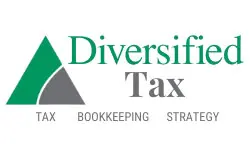Understanding the Differences: 1099 vs W-2 Forms
Understanding the Differences: 1099 vs W-2 Forms
Navigating the tax landscape can be a daunting task, especially when it comes to understanding the differences between the various tax forms. Two of the most common forms individuals encounter are the 1099 and W-2 forms. While both serve essential purposes in the tax filing process, it’s crucial to grasp the nuances between these documents to help ensure accurate reporting and compliance.
In this extensive guide, we’ll delve into the key distinctions between 1099 and W-2 forms, explore the implications for independent contractors and employees, and provide practical insights to help you navigate the tax filing process with confidence.
What is a 1099 Form?
A 1099 form is a tax document used to report various types of income other than wages, salaries, and tips (which are reported on a W-2 form). This form is typically issued to independent contractors, freelancers, and individuals who have received certain types of payments throughout the year, such as rent, interest, dividends, or self-employment income.
The 1099 form comes in several variations, each designed to capture a specific type of income. The most common 1099 forms include:
- 1099-MISC: This form reports miscellaneous income, such as payments for services performed by independent contractors, rent, royalties, and other non-employee compensation.
- 1099-INT: This form reports interest income earned from banks, credit unions, and other financial institutions.
- 1099-DIV: This form reports dividend income earned from investments.
- 1099-NEC: This form reports non-employee compensation, such as payments made to independent contractors for services.
What is a W-2 Form?
A W-2 form, also known as the “Wage and Tax Statement,” is a tax document that employers must provide to their employees at the end of the year. This form reports the total amount of wages, salaries, and tips earned by the employee, as well as the amount of taxes withheld from their paychecks throughout the year.
The W-2 form is crucial for employees, as it provides the information they need to accurately file their personal income tax returns. Employers are responsible for issuing W-2 forms to their employees and submitting copies to the Internal Revenue Service (IRS) and the appropriate state tax agencies.
Key Differences Between 1099 and W-2 Forms
The primary distinction between 1099 and W-2 forms lies in the nature of the employment relationship. Here are the key differences:
- Employment Status: 1099 forms are typically issued to independent contractors or self-employed individuals, while W-2 forms are issued to employees.
- Tax Withholding: Employers are responsible for withholding federal, state, and Social Security taxes from the paychecks of their employees. Independent contractors, on the other hand, are responsible for paying their own taxes, including self-employment tax.
- Reporting Requirements: Employers must report the total amount of wages, tips, and other compensation paid to their employees on the W-2 form. Independent contractors must report their income, expenses, and self-employment tax on their individual tax returns.
- Deductible Expenses: Employees generally have fewer deductible expenses than independent contractors. Independent contractors can deduct business-related expenses, such as mileage, office supplies, and professional development, to reduce their taxable income.
- Health Insurance and Benefits: Employees may be eligible for employer-sponsored health insurance and other benefits, such as retirement plans and paid time off. Independent contractors are responsible for securing their own health insurance and benefits.
Implications for Independent Contractors
For individuals working as independent contractors, the 1099 form carries several important implications:
- Self-Employment Tax: Independent contractors are responsible for paying self-employment tax, which covers their Social Security and Medicare contributions. This tax is typically higher than the payroll taxes withheld from employees’ paychecks.
- Estimated Tax Payments: Independent contractors must make quarterly estimated tax payments to the IRS to cover their income taxes and self-employment tax. Failing to make these payments can result in penalties and interest.
- Deductible Expenses: As mentioned earlier, independent contractors have more opportunities to deduct business-related expenses, which can help reduce their taxable income. It’s essential to keep meticulous records of all eligible expenses.
- Retirement Planning: Since independent contractors do not have access to employer-sponsored retirement plans, they must take a more proactive approach to saving for their retirement, such as contributing to a SEP IRA or Solo 401(k).
Implications for Employees
For individuals working as employees, the W-2 form has the following implications:
- Tax Withholding: Employers are responsible for withholding federal, state, and Social Security taxes from their employees’ paychecks. This can provide a more consistent and predictable cash flow throughout the year.
- Health Insurance and Benefits: Employees may be eligible for employer-sponsored health insurance, retirement plans, and other benefits, which can provide additional financial security and peace of mind.
- Simplified Tax Filing: Employees generally have a more straightforward tax filing process, as their income and tax withholdings are already reported on the W-2 form.
- Limited Deductible Expenses: Employees have fewer opportunities to deduct business-related expenses, as most of their work-related expenses are considered personal or unreimbursed.
Regardless of whether you receive a 1099 or W-2 form, it’s crucial to understand the implications and properly report your income to the IRS. Here are some tips to help you navigate the tax filing process:
- Organize Your Records: Maintain meticulous records of your income, expenses, and any tax-related documents throughout the year. This will make the tax filing process much easier.
- Consult a Tax Professional: If you have a complex tax situation or are unsure about how to report your income, consider consulting a tax professional, such as a certified public accountant (CPA) or enrolled agent. They can provide valuable guidance and ensure you are compliant with all tax regulations.
- Stay Up-to-Date with Tax Laws: Tax laws and regulations can change from year to year, so it’s important to stay informed about any updates that may affect your tax filing. Check the IRS website or consult a tax professional for the latest information.
- File on Time: Ensure that you file your tax return and any necessary forms, such as the 1099 or W-2, by the applicable deadlines to avoid penalties and interest.
Conclusion
Understanding the differences between 1099 and W-2 forms is crucial for individuals to navigate the tax filing process successfully. By recognizing the implications of each form and taking proactive steps to manage your tax obligations, you can ensure compliance, maximize deductions, and minimize the stress associated with tax season. Whether you are an independent contractor or an employee, staying informed and seeking professional guidance can help you make informed decisions and achieve the best possible tax outcome. By embracing the complexities of the tax landscape, you can take control of your financial future and make the most of the tax-related opportunities available to you.




